

Diocletian's Palace
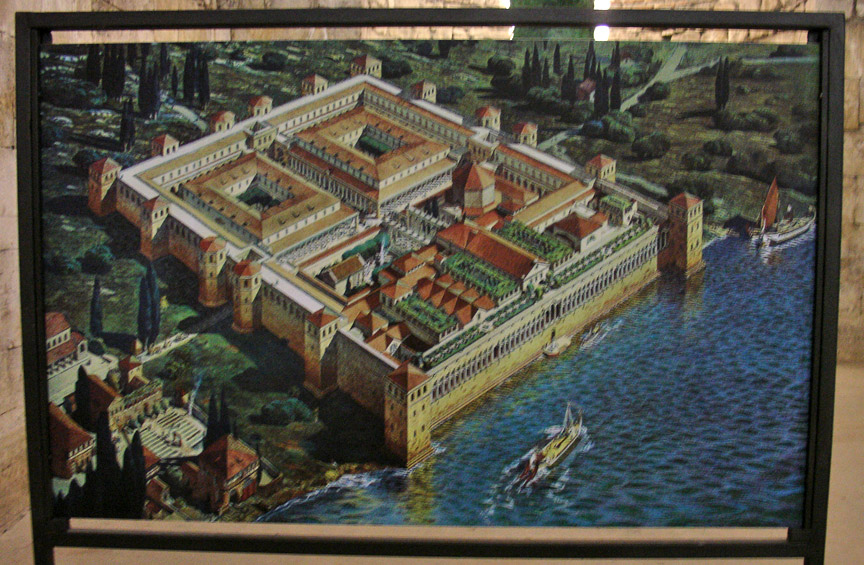
At the end of the third century AD, the Roman Emperor Diocletian built his palace on the bay of Aspalathos. Here, after abdicating on the first of May in A.D. 305, he spent the last years of his life. The bay is located on the south side of a short peninsula running out from the Dalmatian coast into the Adriatic, four miles from the site of Salona, the capital of the Roman province of Dalmatia. The terrain on which the palace was built slopes gently seaward. It is typical karst terrain, consisting of low limestone ridges running east to west with marl in the clefts between them.

This palace is today the heart of the inner-city of Split where all the most
important historical buildings can be found. The importance of Diocletian's
Palace far transcends local significance because of its level of preservation
and the buildings of succeeding historical periods, stretching from Roman times
onwards, which form the very tissue of old Split. The Palace is one of the most
famous and integral architectural and cultural constructs on the Croatian
Adriatic coast and holds an outstanding place in the Mediterranean, European and
world heritage.
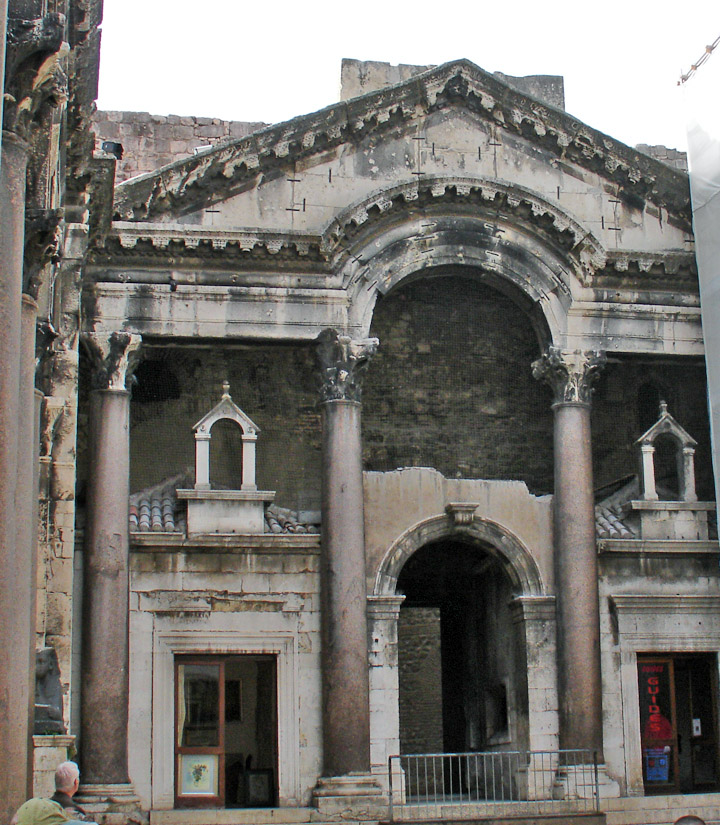
Vestibule
In November 1979 UNESCO, in line with the international convention concerning the cultural and natural heritage, adopted a proposal that the historic Split inner city, built around the Palace, should be included in the register of the World Cultural Heritage.
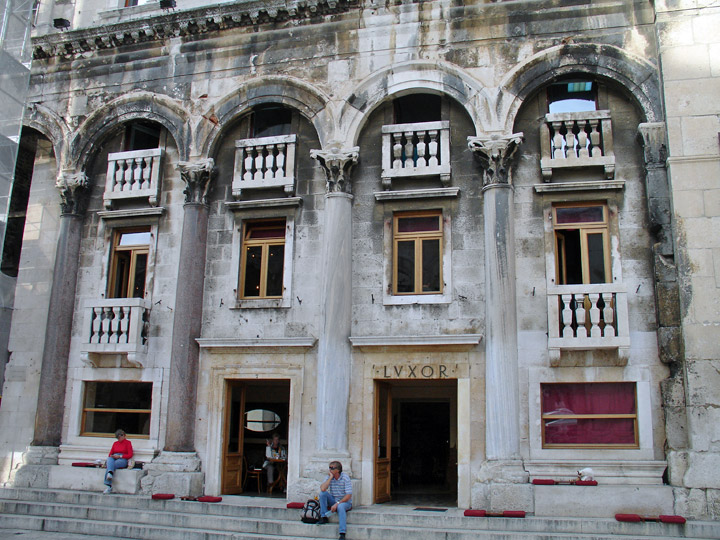
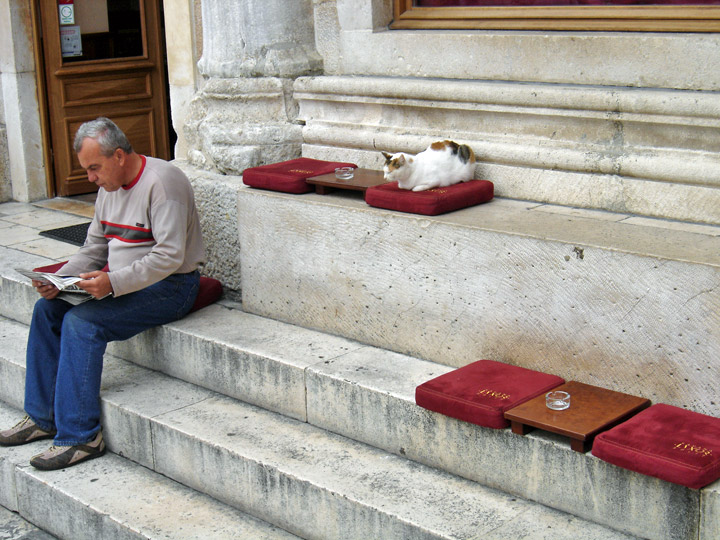
making use of the sitting cushions
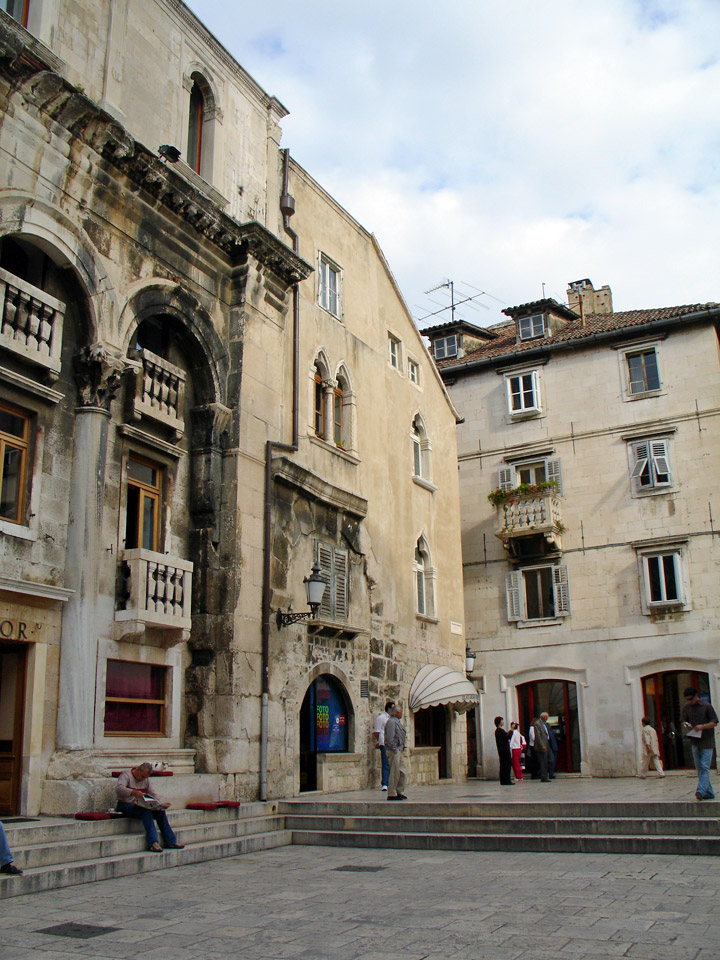
The ground plan of the palace is an irregular rectangle with towers projecting from the western, northern, and eastern facades. It combines qualities of a luxurious villa with those of a military camp. Only the southern facade, which rose directly from, or very near to, the sea, was unfortified. The elaborate architectural composition of the arcaded gallery on its upper floor differs from the more severe treatment of the three shore facades. A monumental gate in the middle of each of these walls led to an enclosed courtyard. The southern Sea Gate was simpler in shape and dimensions than the other three. Perhaps it was originally intended as the emperor's private access to boats, or as a service entrance for supplies.
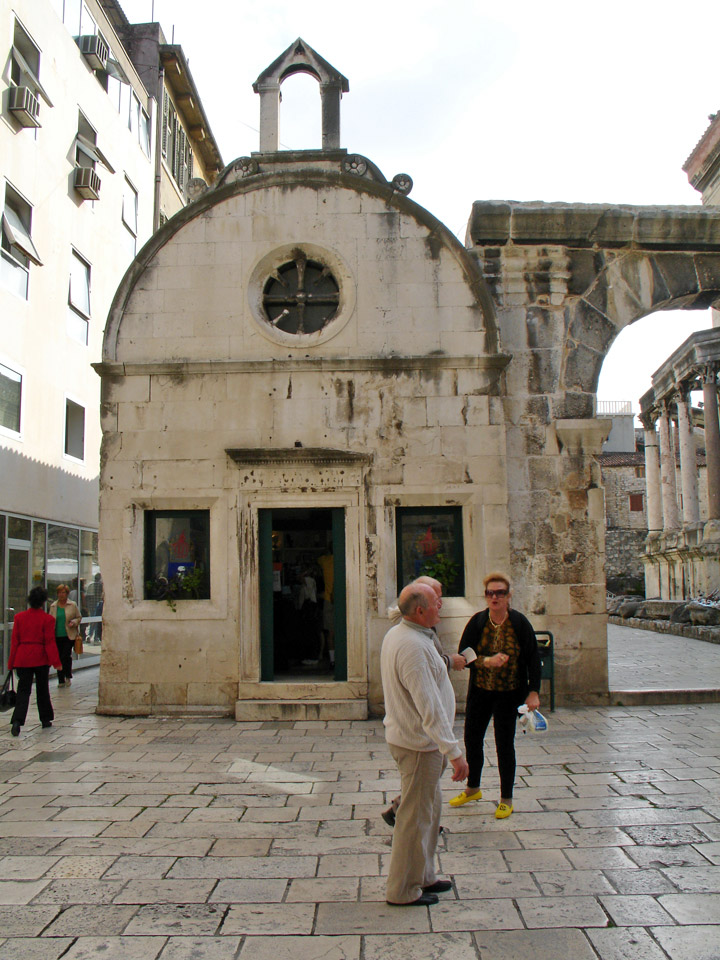
chapel
The dual nature of the architectural scheme, derived from both villa and castrum types, is also evident in the arrangement of the interior. The transverse road (decumanus) linking the east and west gates divided the complex into two halves. In the southern half were the more luxurious structures; that is, the emperor's apartment, both public and private, and cult buildings. The emperor's apartment formed a block along the sea front. Because the sloping terrain created large differences in level, this block was situated above a substructure. Although for many centuries almost completely filled with refuse, most of the substructure is well preserved, giving us evidence as to the original shape and disposition of the rooms above.
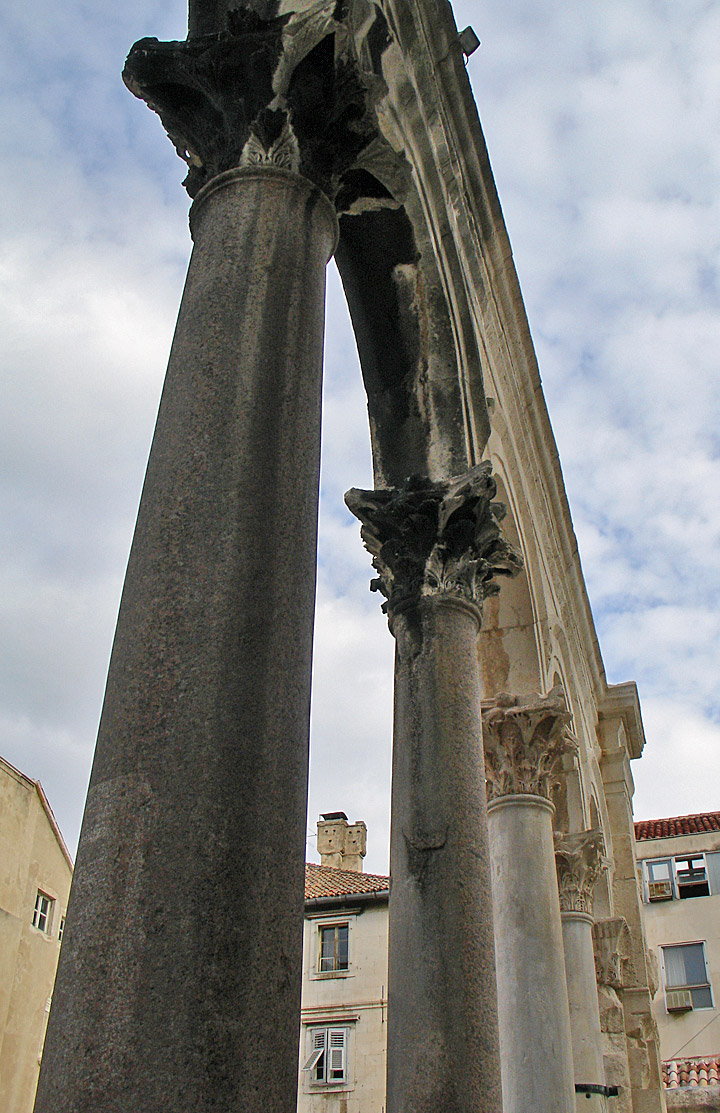
A monumental court, called the Perystile, formed the northern access to the
imperial apartments. It also gave access to Diocletian's Mausoleum on the east,
and to three temples on the west.

The northern half of the palace, which was divided in two parts by the main
longitudinal street (cardo) leading from the North Gate to the Perystile, is
less well preserved. It is usually supposed that each of these parts formed a
large residential complex, housing soldiers, servants, and possibly some other
facilities. Both parts were apparently surrounded on all sides by streets.
Leading to perimeter walls there were rectangular buildings, possibly storage
magazines.
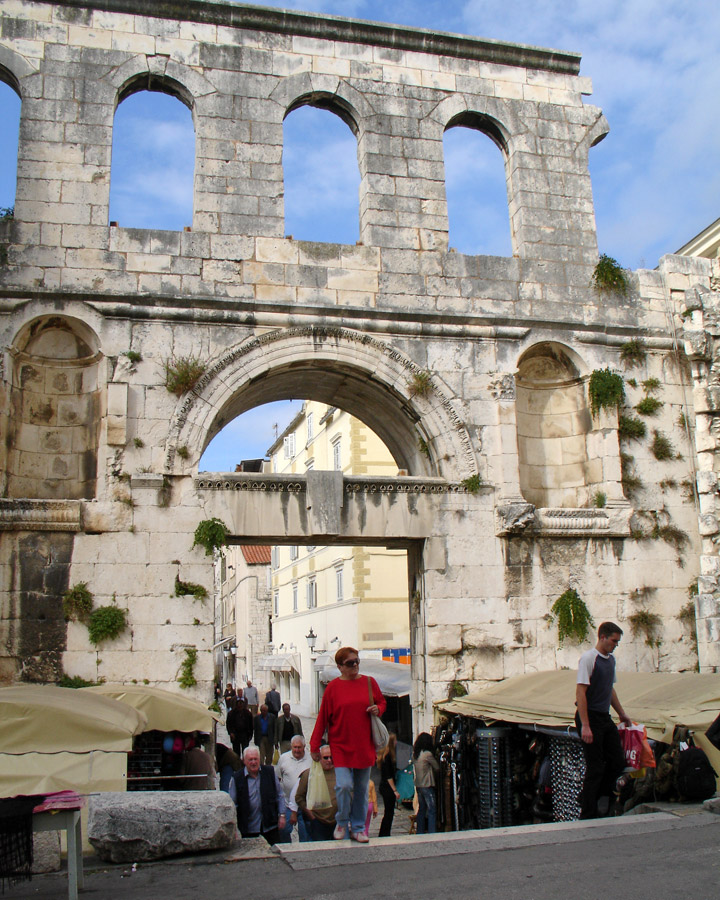
The Palace is built of white local limestone of high quality, most of which was
from quarries on the island of Brac; tuffa taken from the nearby river beds; and
brick made in Salonitan and other workshops. Some material for decoration was
imported: Egyptian granite columns and sphinxes, fine marble for revetments and
some capitals produced in workshops in the Proconnesos.

the aqueduct
Water for the palace came from the Jadro river near Salona. Along the road from
Split to Salona impressive remains of the original aqueduct can still be seen.
They were extensively restored in the nineteenth century.
Cathedral
(formerly Diocletian's Tomb)
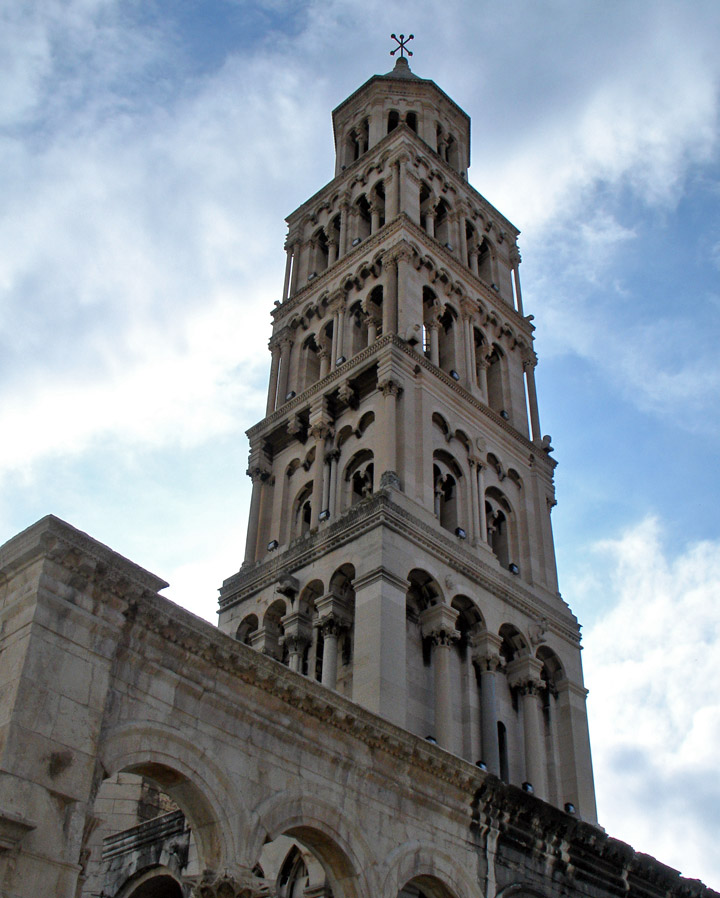
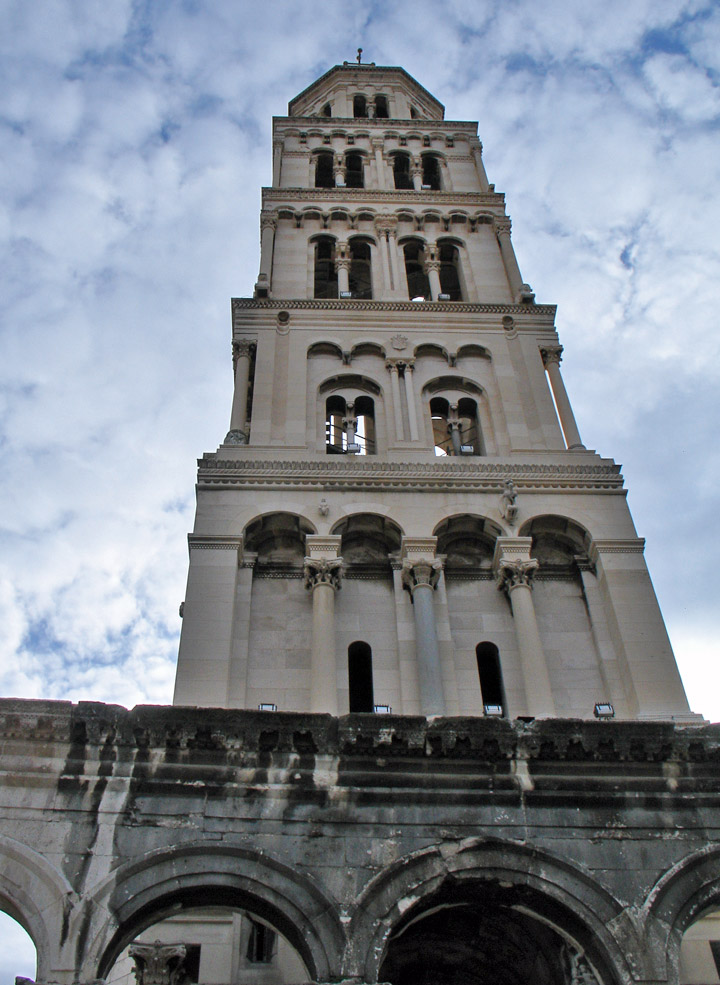
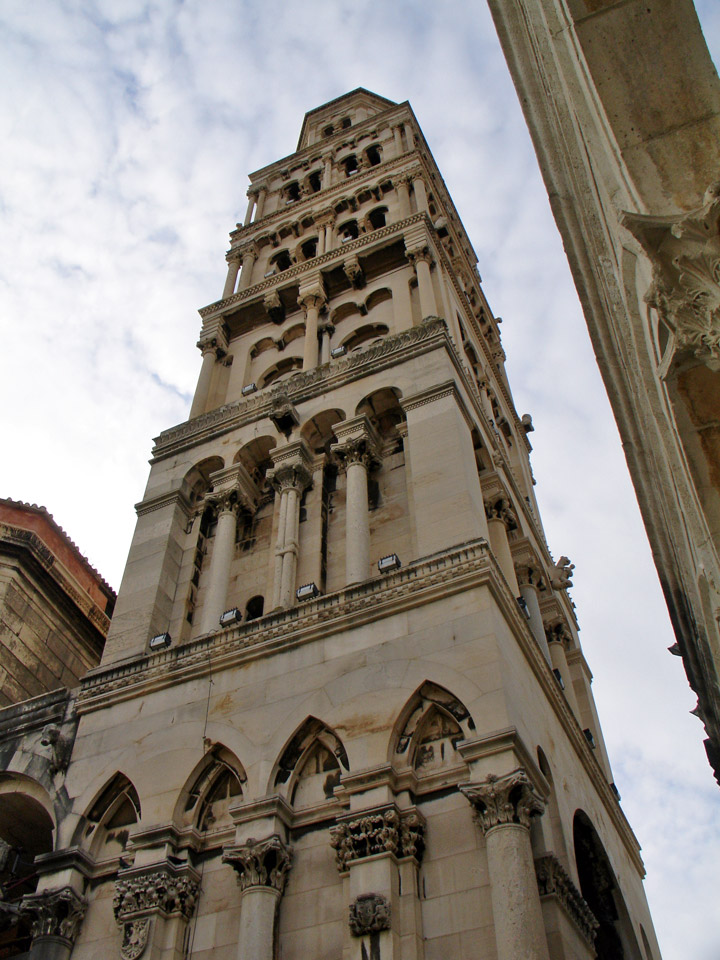
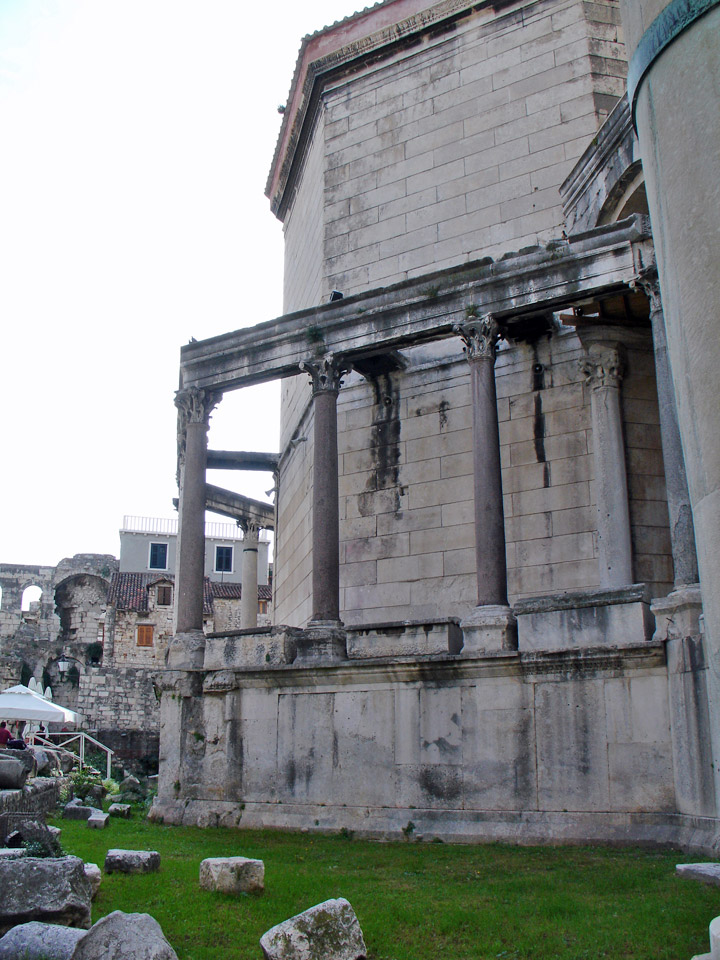
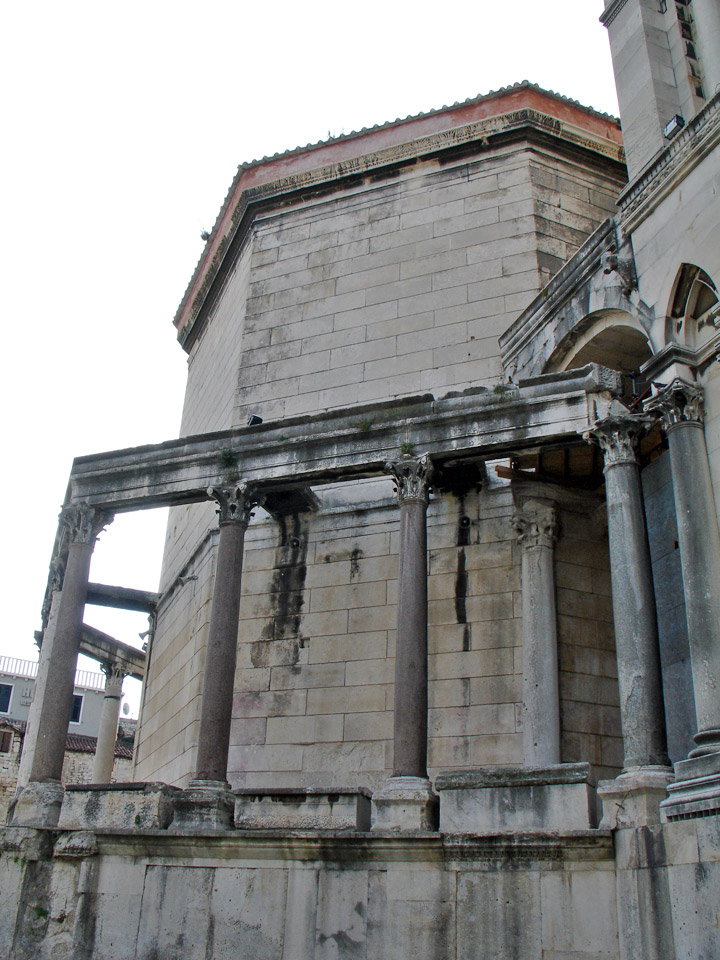
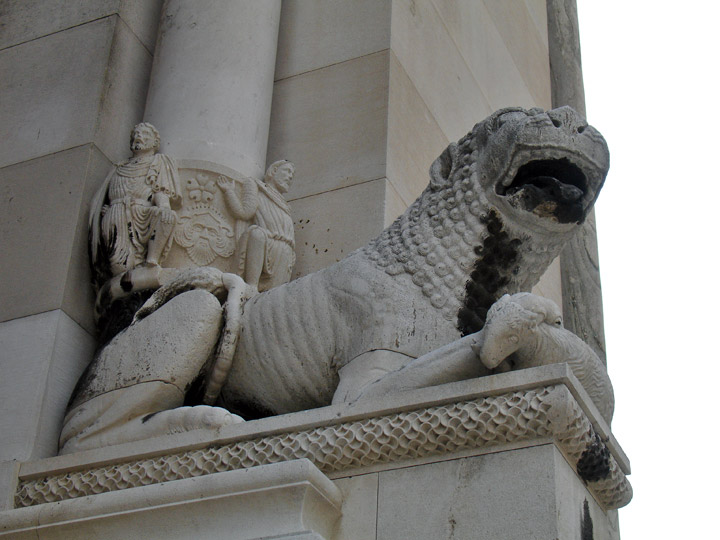
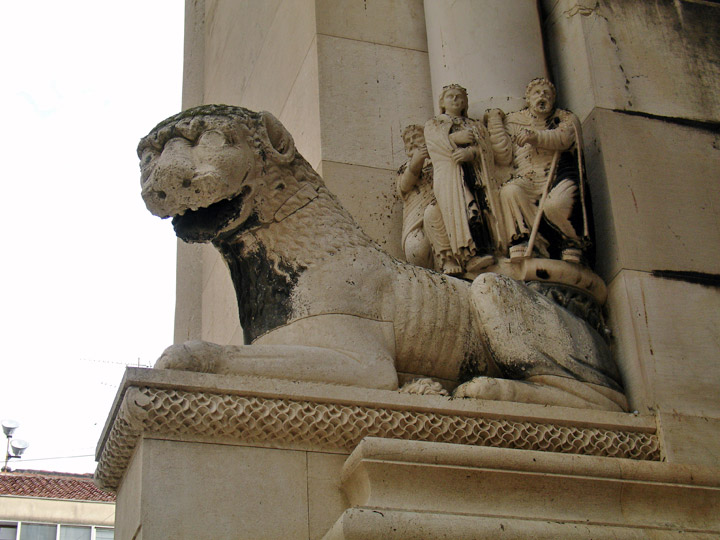
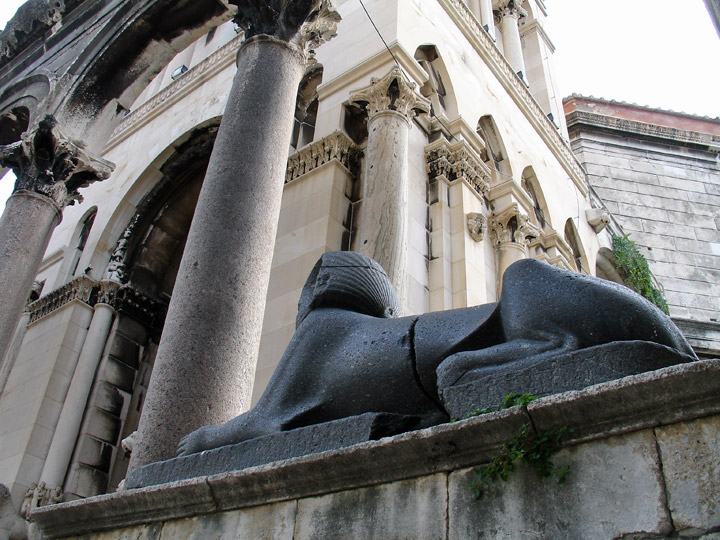
lions at the entrance
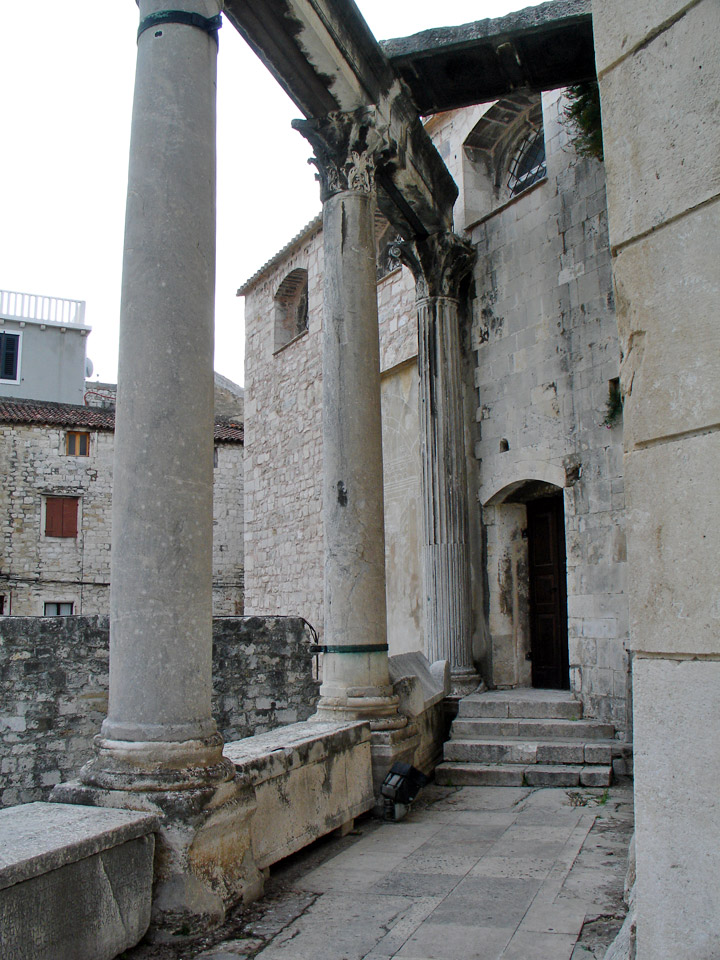
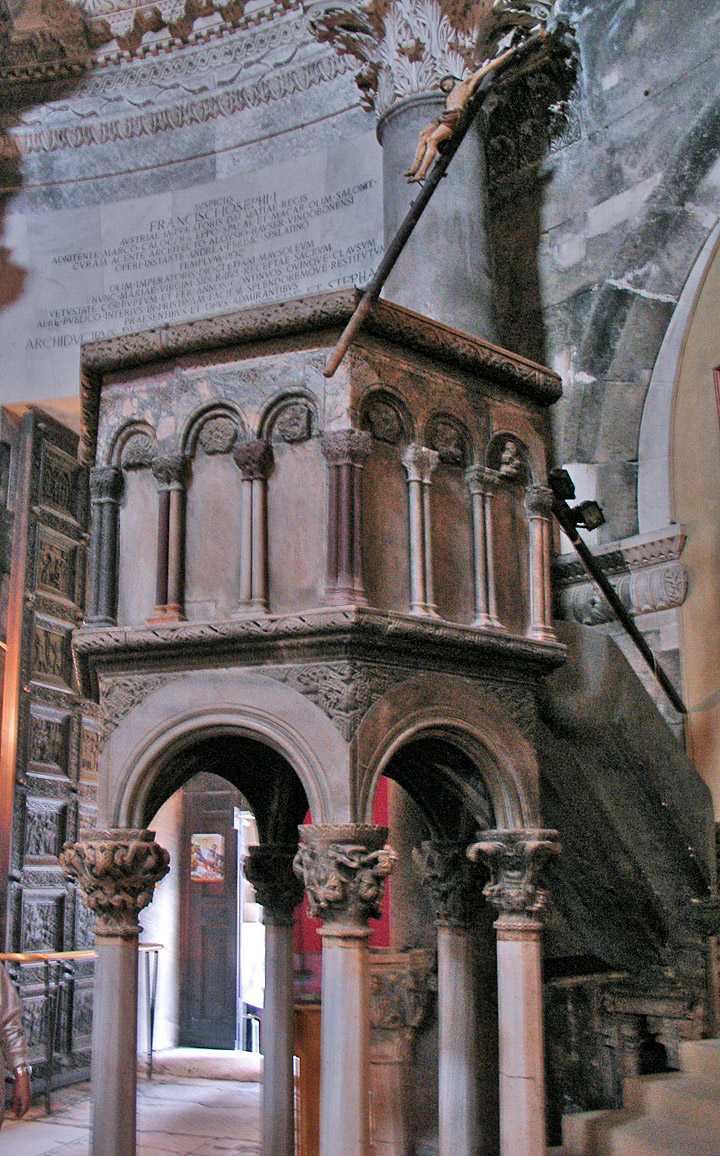
stone pulpit in the interior

the altar
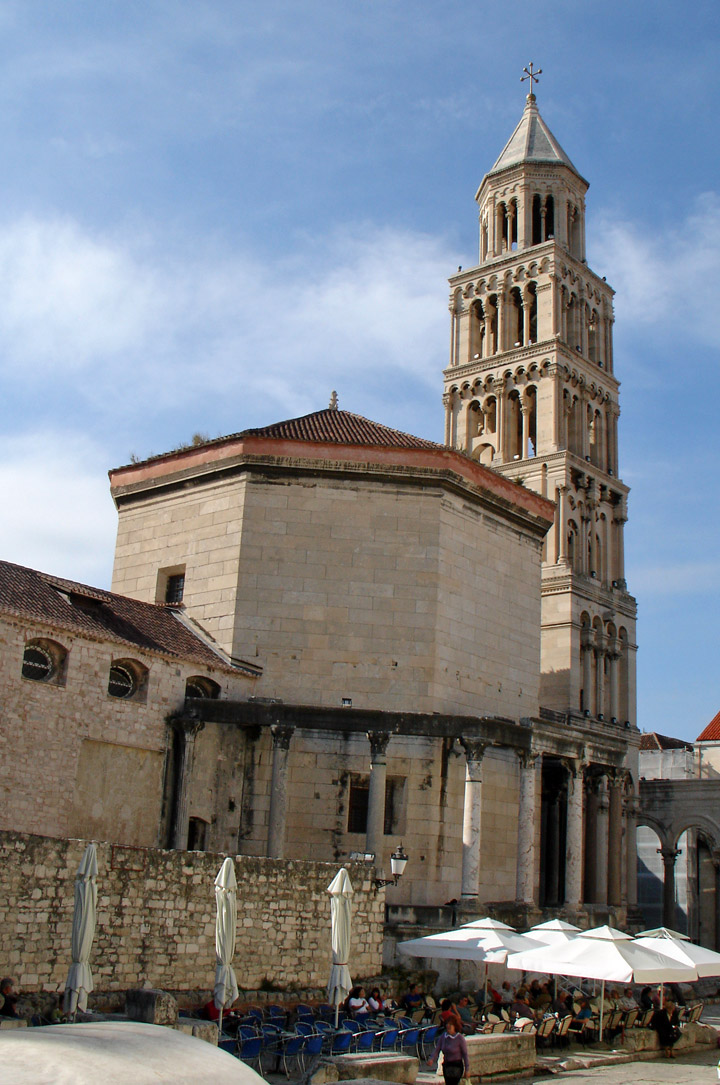

steeple as seen from outside the Palace wall
Baptistery
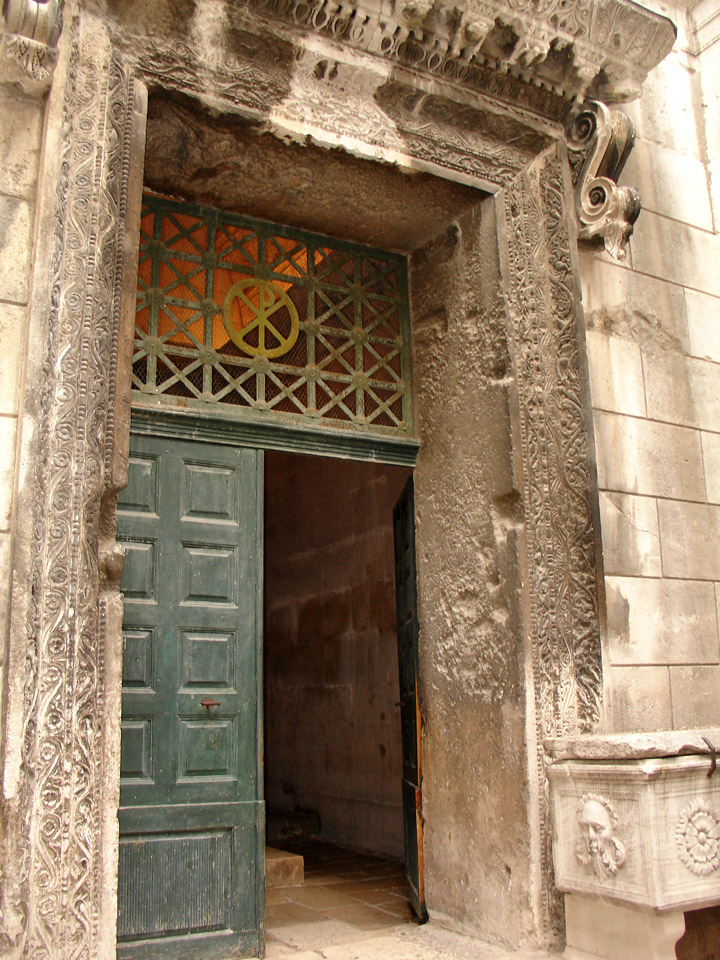
Baptistery
(formerly the temple of Jupiter)
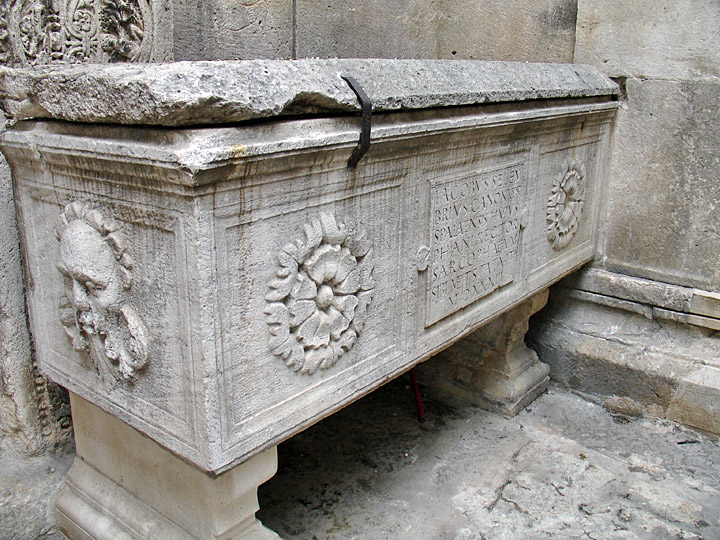
Roman sarcophagus
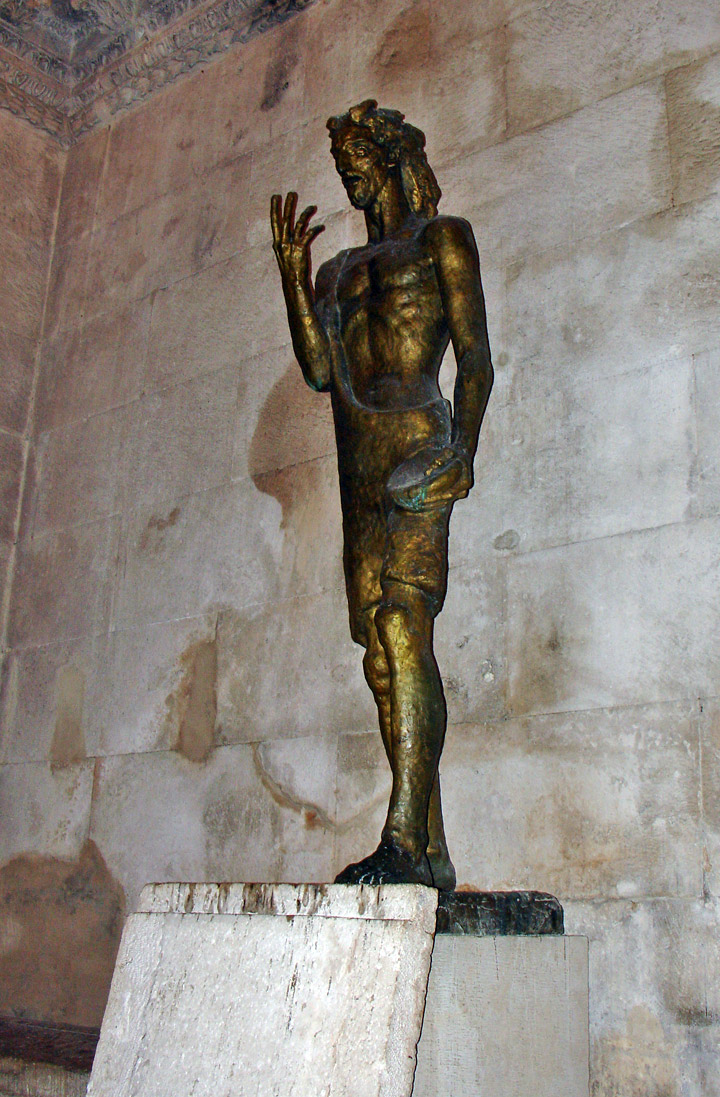
Saint John the Baptist
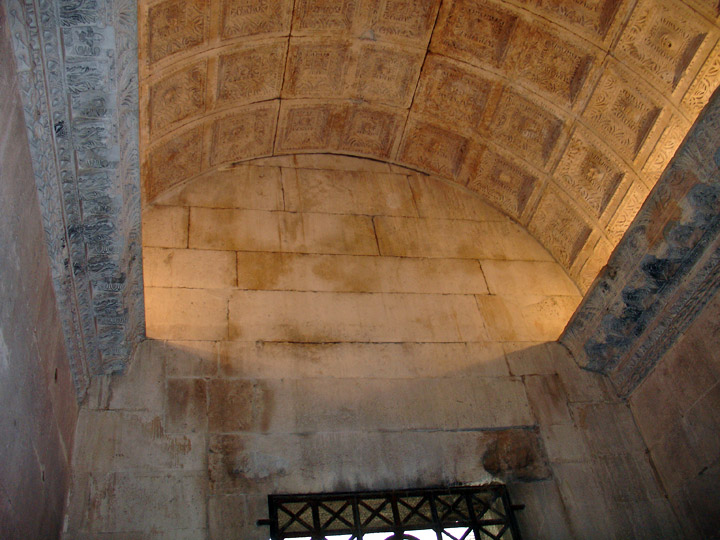
original Roman coffered ceiling
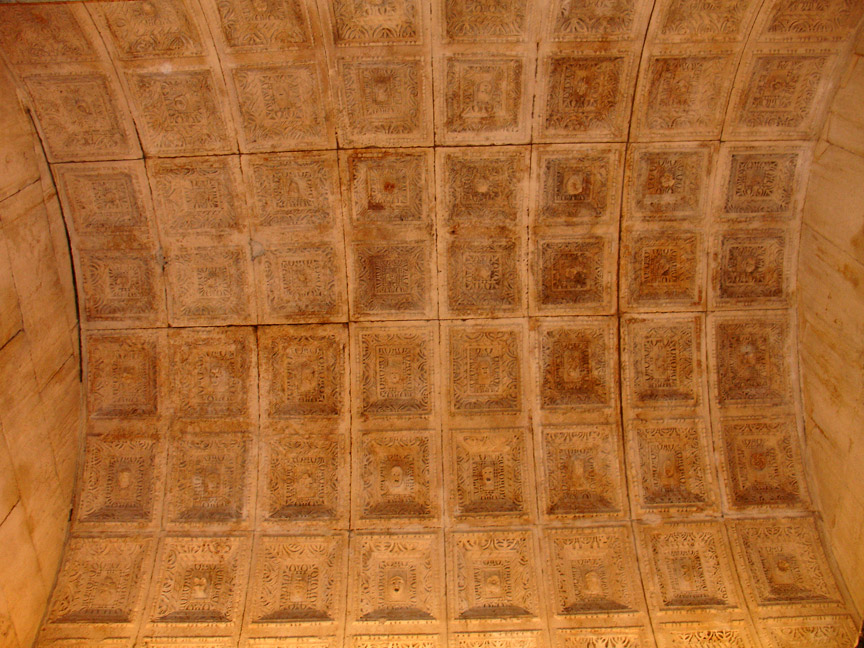
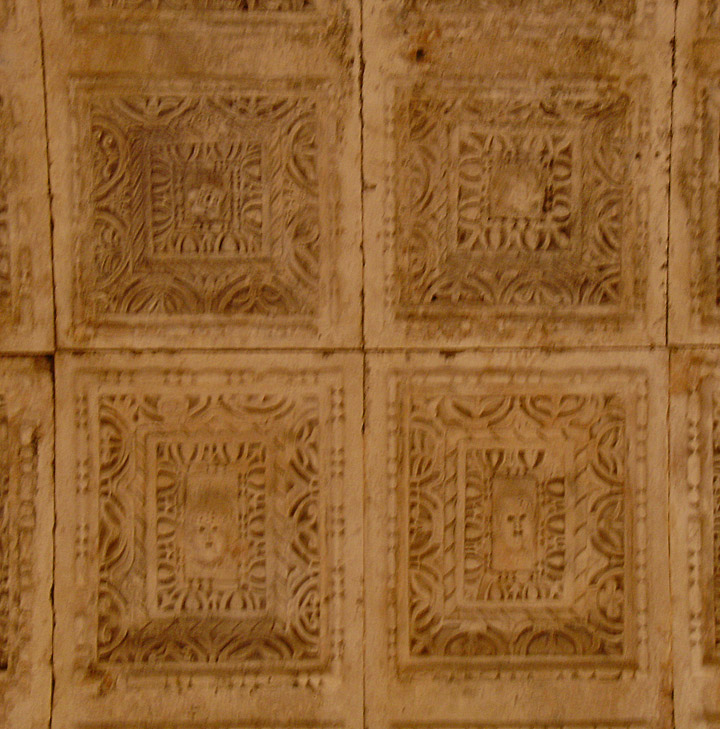
different central motif in each block
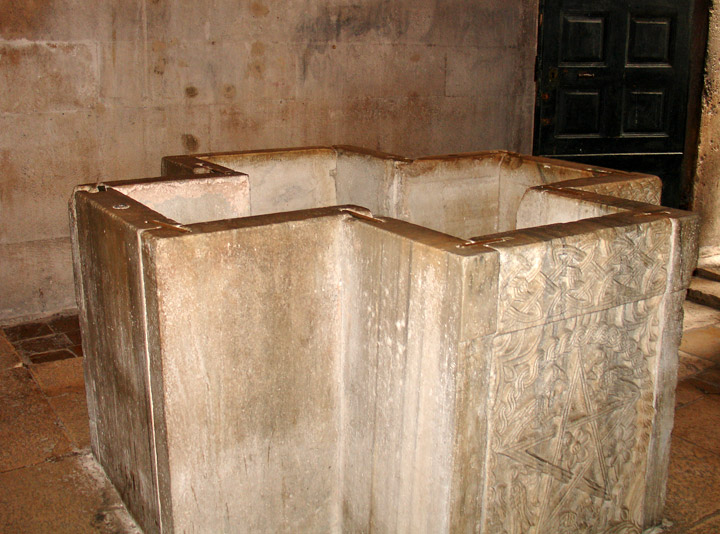
baptistery for total immersion according to the Byzantine rite
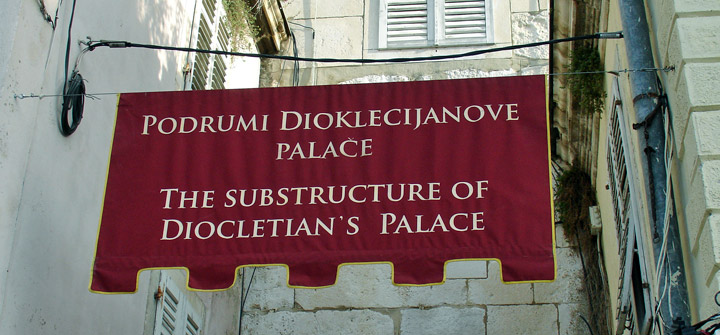
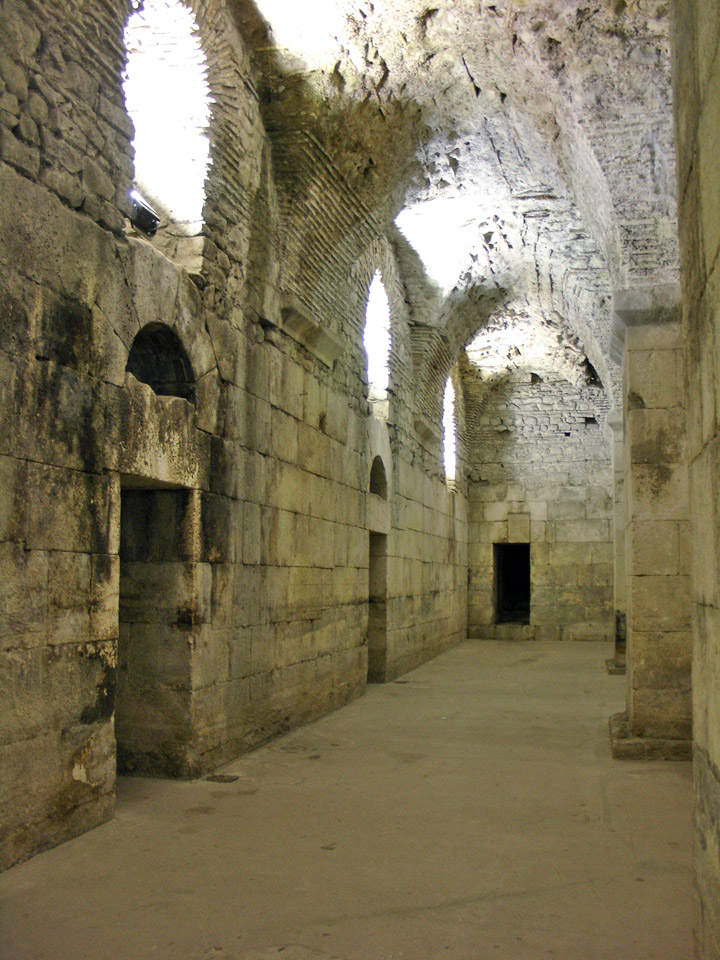
basement rooms
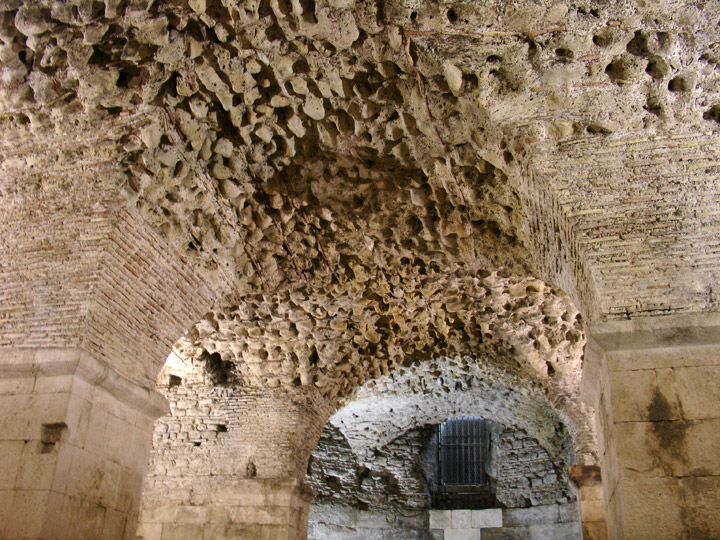
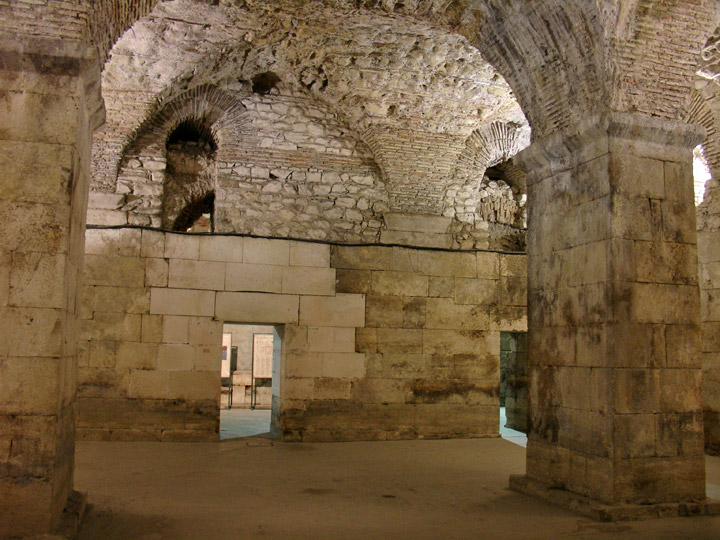
the Roman arched ceiling

portion of a wine press
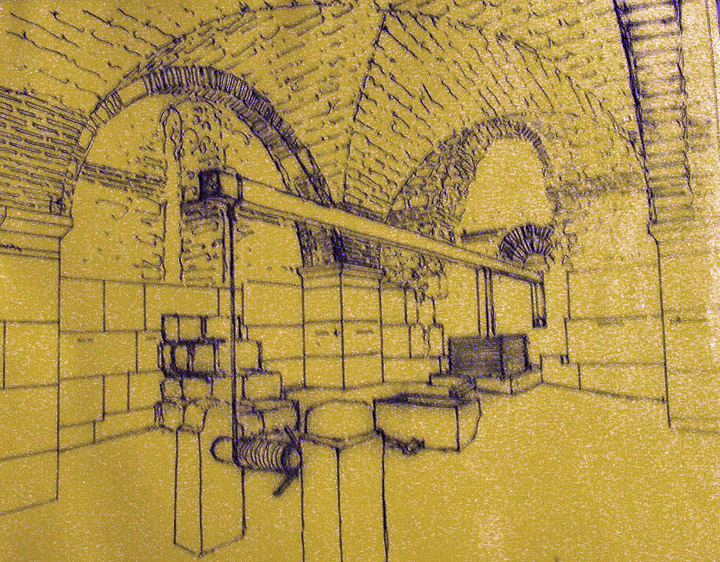
diagram of the Roman period press


bust of Diocletian